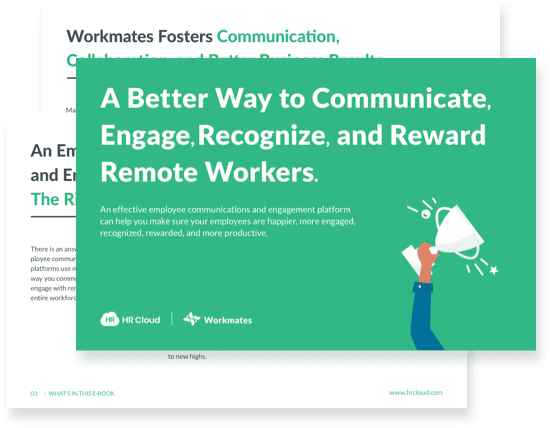Tips for Improving the Way You Manage Multicultural Teams



 Cut onboarding time
by 60%—here's the
Ultimate Checklist
that helped do it.
Cut onboarding time
by 60%—here's the
Ultimate Checklist
that helped do it.

The struggle of managing multicultural teams is nothing new. The challenges we face today are the same ones that have been there for a while. However, as turbulent times have pushed countless companies to go remote, these challenges have stepped into the limelight. Luckily, there are years of research by various HR experts, psychologists, and business professors that have left us with plenty of solutions. Many of which are surprisingly simple.
Cultural challenges
Cultural challenges are the most common ones, so let’s address them first.
Challenge No. 1: The language barrier
The first and biggest problem multicultural teams face is that they all speak a different language. While English may be the one used in your virtual office, it’s still the second or third language someone may speak. Naturally, conflicts, miscommunication, and unnecessary back-and-forth can come from this issue.

The Solutions
1. Have a common language and ask for a specific level.
Even during the screening process, look for candidates whose language level allows them to communicate their ideas understandably.
2. Gather information on language skill level.
If you have agreed on a common language to be used, try to find out at what level everyone speaks. Some might be intermediate while others are beginners. That way, you can look into language courses and provide them to those who need more practice.
3. Solidify common phrases
When it comes to the work itself, you can form a glossary of phrases and words essential to your business that everyone should know.
4. Refrain from over-enunciation or oversimplification
Even if it isn’t possible to communicate with an employee in full, complex sentences, try to avoid speaking so simply it devolves into “Tarzan speak”. Regardless of their language level, everyone can recognize when they’re being talked down to. Use the common phrases you agreed upon, or in the absolute worst-case scenario, turn to Google Translate for very specific requests.
5. Reinforce patience in communication
Especially during presentations. Different language skill levels also mean different presentation and speaking skills. So, whenever an employee needs to hold a meeting or present an idea, make sure to give them enough prep time. You can even try offering help.
Challenge No. 2: Traditions, beliefs, and ideals
One of the most infamous episodes of the cult show The Office already in its first season addressed diversity in the office, and how trying to force people to learn of each other’s culture can quickly spiral out of control. It put an emphasis on how even experienced managers aren’t fully equipped (nor can they be) to help increase cultural tolerance.
In a research titled, Culturally Relational Education in and With an Indigenous Community, authors Donald, Glanfield, and Sterenberg said this:
“[Culturally responsive teaching], we believe, is too easily reduced to essentializations, meaningless generalizations, or trivial anecdotes—none of which result in systemic, institutional, or lasting changes to schools serving Indigenous children.”
This begs the question: What is the appropriate way to acknowledge and celebrate diversity without taking it too far?
Here are some suggestions:
Solutions:
1. Cultural sensitivity and diversity training
In case you decide to give some kind of training, the best course of action is to find trained agencies or teachers who could guide the meetings. Cultural responsiveness is a complex and nuanced subject that should be addressed by qualified personnel.
2. Improve your candidate screening process
ACA Knowledge Center published an article detailing the methods used to educate managers on recognizing socially and culturally intolerant candidates. The authors provided example interview questions that test the candidates’ self-awareness of their own prejudices, appropriate communication, boundaries, etc.
3. Tell employees to openly voice their boundaries
Allow them to personally (or anonymously) let their coworkers and managers know what kind of questions or comments bother them, to avoid unnecessary conflicts. Additionally, they should disclose any cultural and religious traditions that could affect their workflow. For example, Muslims will have prayer times five or more times a day, called salat times. Other employees should be made aware of this, to know that their coworker will be unavailable during that time, and respect their religious tradition.
4. Encourage informal cultural sharing
Instead of forcing any stock “diversity days”, you can gently direct your remote team to learn from one another through informal channels. For example:
-
Sharing their favorite recipes for others to cook;
-
Making a calendar of major international holidays and celebrating them together;
-
Having movie/music hangouts where each employee shares their favorite song or movie;
-
Discussing the most notable places and monuments of each country/sharing photos, or;
-
Simply organizing coffee/tea breaks where they can discuss any topic.
Appreciation and recognition challenges
Karen S. Walch of Thunderbird School of Global Management uses an international company’s incident as a cautionary tale. Namely, the company wanted to reward their Singaporean employees by giving them red envelopes recognized in their culture as New Year’s gifts, to show respect and gratitude. However, the gesture backfired as the envelopes, which usually contain a symbolic sum of money, had 4 Singaporean dollars. To them, number 4 was widely regarded as the number of deaths. Needless to say, this incident caused a lot of confusion, worry, and even outrage.

To learn even more about managing remote teams and keeping employees working at home highly engaged, download our ebook now.
Download nowThis challenge poses the second question: How can you show appreciation without crossing any cultural lines of appropriateness?
The last thing you want is for good intentions to be misinterpreted as culturally insensitive.
Challenge No. 3: Finding the appropriate form of recognition
We know that each culture has its own way of giving and responding to compliments. They don’t just vary in idiomatic expressions and sentence construction but also have an etiquette of their own. For example, having modesty as one of their major ideals, the Chinese will often respond to a compliment with negative politeness (ex. “No, I’m not that good at it”, or “No, I’m old and wrinkly”).
Aside from informing yourself of the basic compliment etiquette, what else can you do?
Solutions:
1. Find a unified, agreed-upon reward system
To avoid cultural mishaps, it’s best to discuss together how to reward and highlight good practices at work. One possible universal solution is a digital tool or platform that takes away a lot of the legwork for you. For example, HR Cloud’s Workmates solution creates an integrated platform that connects HR and employees, as well as employees among themselves. It lets managers reward successes with small things like highlights, kudos, and a point system that transfers to online gift cards.
Chief Executive Officer of Medlinks Cost Containment, Inc. and Medlinks Staffing, LLC.
“Our staff has praised the increased communication level Workmates delivers. We use it to communicate important project matters and give staff specific ‘kudos’ or even recognize their birthdays. More importantly, we use Workmates to clarify important project details that needed rapid dissemination among the entire team.”
2. Acknowledge in the native language
It’s a small thing, sure. It might even seem insignificant. But to many international employees, giving brief praise in their native language for a task well done, or a deadline met will be interpreted positively. It shows you want to acknowledge them properly. What’s more, it will help them feel more valued and seen.
3. Learn what type of praise and recognition works best
According to certain HR-oriented studies, Indian workers, for example, prefer straightforward, direct, specific feedback. They are driven, wanting to advance in their workplace as fast as possible, so their diligence knows no bounds. Both managers and HR will do well to look into the following points to ensure their feedback is adapted to each culture.
4. Use the Andy Molinsky framework
Andy Molinsky is a recognized expert in the field of cross-culture relations. He devised six questions that form a solid framework for multicultural feedback and recognition. As mentioned in the previous point, this can boost your employee engagement. Different cultures need different types of approval. And if you manage to accommodate them, you lessen the chances of employee turnover, while boosting overall satisfaction and productivity.

Summary
Plenty of articles nowadays deal with multicultural challenges. And we usually see the same ones pervading across various industries. However, when we take a deeper, more researched dive into the core issues, it becomes evident that the smallest things can be the solution. Adapted, culture-appropriate feedback, supporting organic connections between employees, and reinforcing cultural visibility are crucial.
Author Bio:
Marija Kojic is a writer, and a productivity expert specializing in time management techniques. She works at Clockify, where she enjoys helping people discover meaningful and effective ways to work smarter.
Keep Reading
Top 10 Best Employee Engagement Software
An employee engagement platform acts as a hub for the daily or other periodic rituals of
How to Improve Employee Engagement in Healthcare: 9 Simple Things to Start Doing Today
Improving employee engagement in healthcare teams directly impacts the level of care
Employee Engagement Best Practices: The Dos and Don’ts (Free Manager Checklist Inside)
If you follow the right employee engagement best practices, that can turn engagement
Like What You Hear?
We'd love to chat with you more about how HR Cloud® can support your business's HR needs. Book Your Free Demo

Build a Culture of Recognition. Boost Engagement. Guaranteed.
Workmates empowers employees to stay informed, connected, and appreciated—whether they’re on the front line, in the office, or remote. Recognition drives 12x higher engagement.Trusted by industry leaders in every sector




Cut Onboarding Costs by 60%.
Take the confusion and follow-ups out of onboarding with automated workflows, digital forms, and structured portals—so new hires ramp faster 3X quicker.Trusted by industry leaders in every sector





